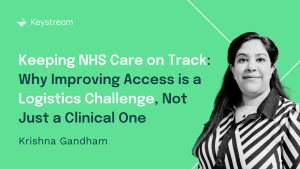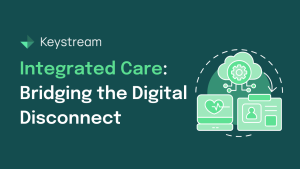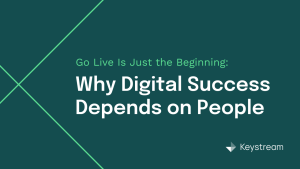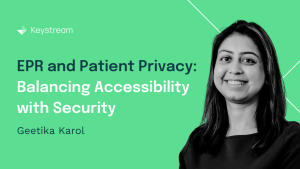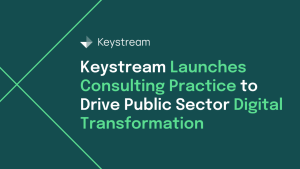02.10.2024
EPR and Patient Privacy: Balancing Accessibility with Security
Having worked with different EPRs globally for over a decade, I am deeply committed to driving digital transformation in healthcare as healthcare industry, with its direct impact on people’s lives, is too important to stay the same. A challenge I’ve frequently encountered is finding the right balance between ensuring accessibility and maintaining data security.
While working on a security project for one of our NHS clients, initiated by a CQC audit, I recognised a significant gap between user qualifications and their access to the EPR system. For example, a nurse with no IRMER certification was ordering diagnostics and medical secretaries were prescribing, which is a huge patient risk.
Why is patient privacy crucial, and how can we strike the right balance between accessibility and security while addressing the challenges of EPR privacy and protection?
The Importance of Patient Privacy
Patient data, including medical history, diagnoses, and personal details, is sensitive and must be treated with the utmost care. Protecting patient privacy is not only an ethical obligation but a legal one, governed by regulations like Data Protection Act 2018 and the General Data Protection Regulation (UK GDPR).
Balancing Accessibility with Security: Key Strategies
To successfully manage the delicate balance between accessibility and security in EPR systems, healthcare organisations must implement a multifaceted approach.
- Role-Based Access Control (RBAC)
RBAC ensures that only authorised personnel can access specific parts of a patient’s medical record. For example, while a doctor may need access to the full medical history, administrative staff might only need access to appointment scheduling information. Limiting data access based on roles minimises the risk of unauthorised access.
- Encryption
Encryption is one of the most effective ways to protect patient data. By encrypting data both at rest (when stored) and in transit (when being shared), healthcare providers can ensure that even if the data is intercepted or compromised, it remains unreadable to unauthorised individuals.
- Two-Factor Authentication (2FA)
Two-factor authentication adds an extra layer of security to EPR systems. In addition to a password, users must provide a second form of identification, such as a fingerprint or a code sent to their phone, before accessing the system. This reduces the risk of unauthorised logins, even if passwords are compromised.
- Audit Trails and Monitoring
EPR systems should maintain detailed logs of who accessed what data and when. Regular audits of these logs can help detect any suspicious activity or unauthorised access. Continuous monitoring of the system for potential vulnerabilities can prevent data breaches before they occur.
- Patient Consent and Control
Giving patients more control over their own data is an important privacy measure. Patients should be informed about who has access to their records and be able to consent to or restrict access when appropriate. For instance, patients might choose to limit access to certain parts of their medical history to specific providers.
- Employee Training
Human error is a significant factor in data breaches. Regular training for healthcare staff on privacy policies, recognising phishing attempts, and secure data handling practices is crucial for minimising risk. Employees should be well-versed in recognising suspicious activity and following proper protocols for accessing and sharing patient information.
Overcoming Challenges in EPR Privacy and Security
Even with strong security measures in place, healthcare organisations face several challenges in balancing accessibility and privacy:
- System Integration: Healthcare providers often use different systems for various aspects of care (e.g., labs, imaging, outpatient services). Ensuring that these systems are interoperable while maintaining security and privacy standards can be complex.
- Mobile and Remote Access: With the rise of telemedicine and remote healthcare, providers are accessing EPR systems from various locations and devices. This creates more entry points for potential cyberattacks, making robust security protocols for mobile access essential.
- Balancing Speed with Security: In critical situations, quick access to patient data can save lives. However, adding layers of security such as 2FA and encryption might slightly delay this access. The challenge lies in ensuring that security protocols do not hinder the efficiency of care delivery.
- Data Sharing Across Providers: Sharing patient data between healthcare institutions while maintaining privacy requires standardised, secure methods. Establishing consistent practices across institutions can be challenging but is crucial for coordinated care.
As healthcare becomes more digital, the importance of balancing EPR accessibility and patient privacy cannot be overstated. Achieving this balance requires a combination of technology, policy, and training. By implementing strong security measures and fostering a culture of privacy awareness, healthcare providers can offer the best of both worlds: fast, efficient access to patient records and the highest level of data security.

